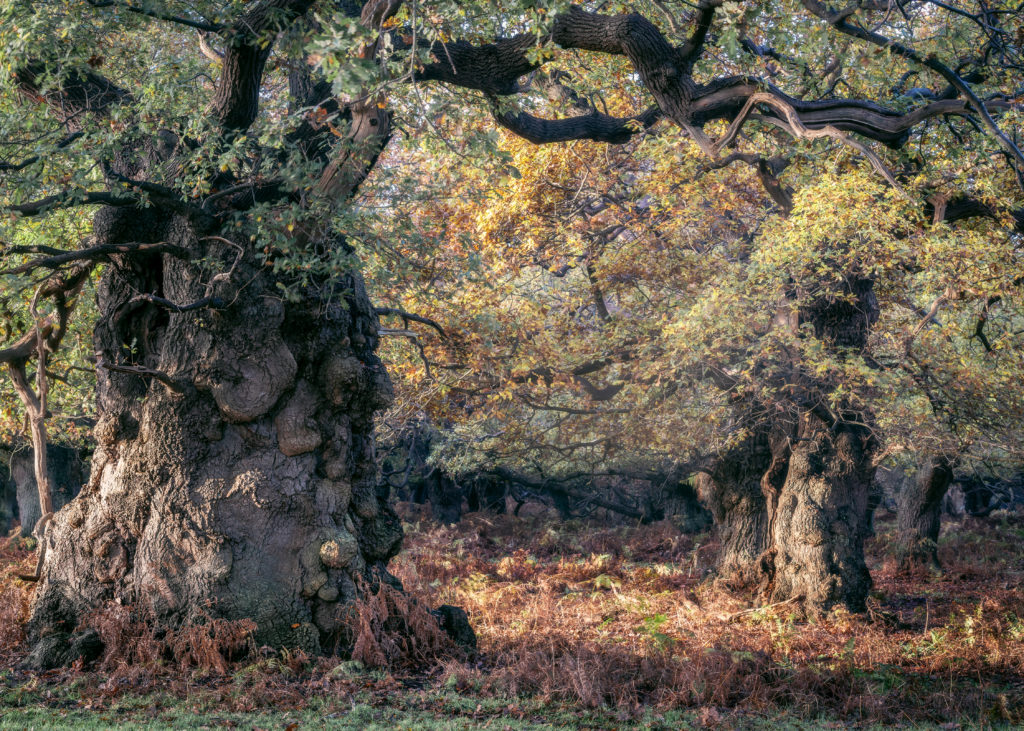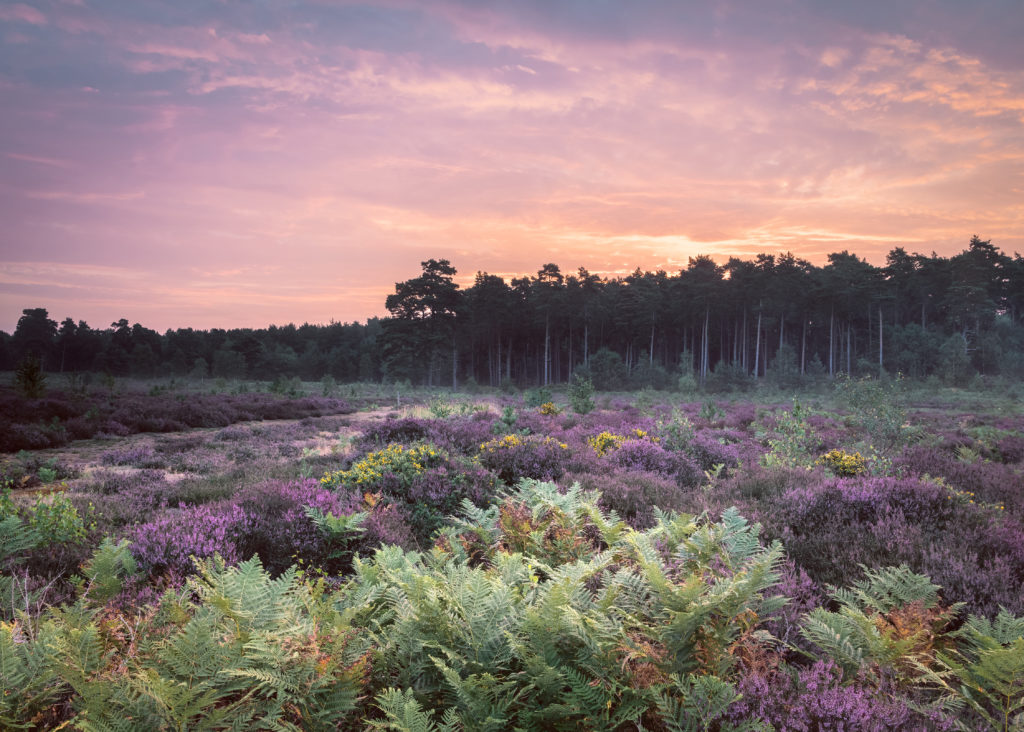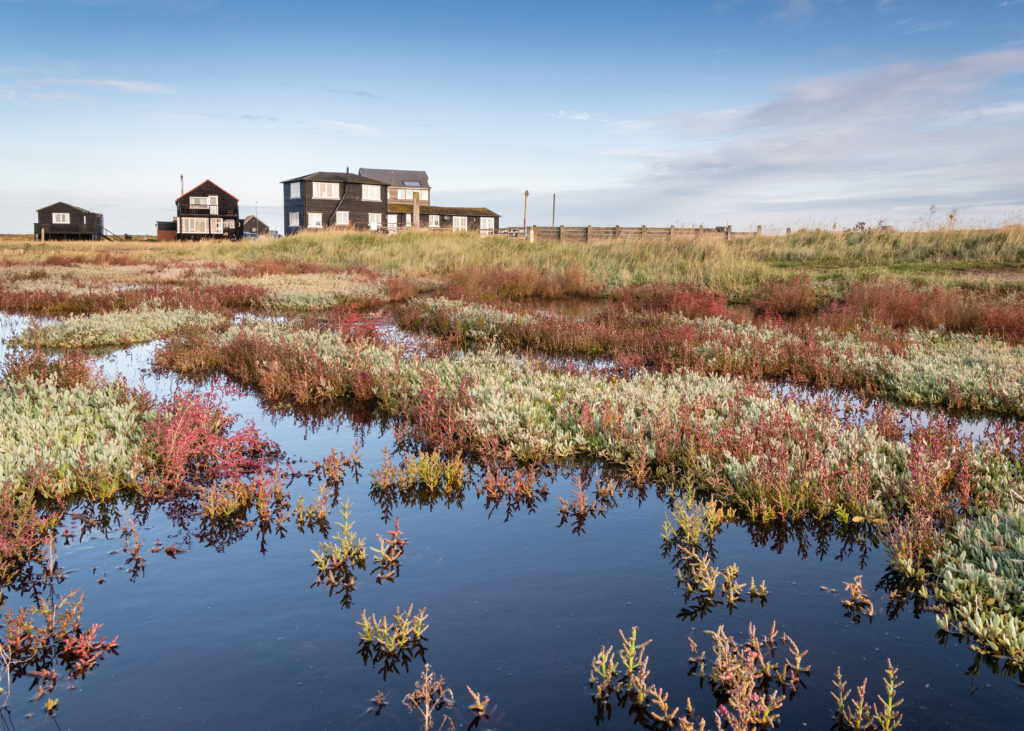The Coast & Heaths Area of Outstanding Natural Beauty (AONB) has some of the most appealing landscapes for walking all year round. This winter, wrap up warm and get out and explore the area at your own pace!
1. Aldeburgh and Thorpeness
Two of the AONB’s most well-known destinations, Aldeburgh and Thorpeness are renowned for their beaches, arts, architecture, and of course fish and chips!
Marvel at Maggi Hambling’s famous Scallop sculpture which was dedicated to Benjamin Britten, who often walked along the beach. It’s not only home to music and art, but also rare, vegetated shingle.
North along the beach, Thorpeness is a picturesque refreshment pit-stop with its meare and The House in The Clouds perched on the horizon. RSPB North Warren nature reserve is a great place to see wildlife!
6.5 miles/ 10.5km, mostly flat terrain – Allow 3 hours. Parking available at Fort Green Car Park, Aldeburgh.

2. Rendlesham Forest and Staverton Woodland
A walk featuring the ancient, the old, the new and the unexplained! Explore the diversity of forest plantation and one of Suffolk’s few ancient woodlands. Starting at Rendlesham Forest, taking in Staverton Thicks and Butley Priory along the way.
Rendlesham Forest was established during the First World War when Britain had increasing demand for timber and is now managed by the Forestry Commission. In 1980 the Forest was the site of a supposed UFO event. The truth is out there!
Staverton Thicks is one of the three wooded areas that forms what remains of the medieval Staverton Park. Some of the Oak trees are well over 400 years old. Dating back even further, Butley Priory is an Augustinian Priory founded in 1171!
7.7miles/12.5km, mostly flat terrain – Allow 3 hours. Parking and toilets available at Rendlesham Forest Centre.

3. Sutton and Hollesley Heaths
The Sandlings was once an extensive heathland stretching from Southwold to Ipswich, created by early farmers who cleared trees from the light sandy soils. In the last 100 years, before the true habitat value of heathland was realised, over 90% of the Sandlings heath was lost.
Two fine examples that remain can be enjoyed by looping from Sutton Heath to Hollesley Heath and back, taking in the grazing wildlife and the remnants of the area’s military history, from barracks to World War Two defences.
6.4 miles/10.3km, mostly flat terrain – Allow 3 hours. Parking available south of Sutton Heath, nearest postcode IP12 3TG.

4. Walberswick
The idyllic village of Walberswick provides the perfect location for exploring a mosaic of unique landscapes including reedbed, woodland, heathland, marsh, and shingle coast, which sustain a large diversity of wildlife.
Suffolk Coast National Nature Reserve on the route includes one of the largest reedbeds in Britain and the Blyth estuary. Away from the coast, Dunwich Forest is a heathland wonderland. Starting and finish at the heart of the village, this route offers plenty of opportunities for fantastic views!
8.3 miles / 13.3km, mostly flat terrain. Allow 4 hours. Parking and toilets available at Walberswick Village Hall

5. Wrabness
Part of the new extension area of the AONB that was designated in 2020, Wrabness is a quiet village on the Essex shore of the River Stour, including miles of attractive countryside stretching down to the estuary and Stour Wood, an ancient woodland with many fine trees.
Wrabness train station provides the perfect starting and end point to a walk. Along the way enjoy Stour Wood, part of the RSPB’s Stour Estuary Reserve, and All Saints Church, dating from the Norman period.
4.2 miles / 6.7 km, muddy terrain after rain. Parking and seating available at Wrabness Station.

For full walking guides for these routes and many more, visit www.suffolkcoastandheaths.org/exploring

